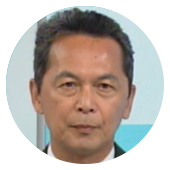The Prohibition Treaty
In his peace declaration this year, Hiroshima Mayor Kazumi Matsui urged Japan's government to listen to the hibakusha's calls to join the UN treaty banning nuclear weapons.
It is the first legally binding international agreement to prohibit development, possession and use of nuclear weapons.
The treaty passed with the support of 122 countries and territories -- about two-thirds of UN members. It bans the use as well as the threatened use of nuclear arms, rejecting the idea that the existence of such weapons acts as a deterrent.

Nuclear states, including the United States and Russia, as well as the world's only atomic-bombed country, Japan, continue to reject the treaty.
The Japanese government says it could further divide the nuclear and non-nuclear states and will not be effective in banning nuclear arms.
The status quo
The treaty would go into effect 90 days after 50 countries ratified it. Seventy countries have signed the pact so far, but only 25 have ratified it, including Austria, New Zealand and Thailand.
The International Campaign to Abolish Nuclear Weapons (ICAN) says it expects that number to reach 50 sometime next year, assuming most signatories will ratify.
The average age of A-bomb survivors is now 82. The existence of the treaty has raised the prospect of them achieving their long-sought goal of a worldwide ban on nuclear weapons.
Headwinds stall nuclear disarmament
Different countries have different procedures for ratifying the treaty, and it takes time, so it is difficult to predict when each country will complete the process.
Some observers say the lag is due to pressure from nuclear states that claim the pact contradicts some elements of the Nuclear Non-Proliferation Treaty.
Last week, the Intermediate-Range Nuclear Forces Treaty between the US and Russia expired. That treaty was a foundation of nuclear arms reduction agreements between these two major powers. Their actions are fueling concerns among A-bomb survivors.

International signature campaign
A-bomb survivors have been working hard, using public opinion to push countries to ratify. Survivors in and outside Japan launched an international campaign in 2016. They're aiming to collect hundreds of millions of signatures from around the world, calling on all countries to join the treaty and scrap nuclear weapons by 2020. They thought that signatures collected in each country would build momentum for the pact. By the end of March, more than 9,415,000 people in Japan had signed.
But the number of signatories has recently begun to fall off. Events were held across Japan in July to build support. Activists discussed an appeal to religious leaders around the world, including Pope Francis, who is scheduled to visit Nagasaki in November.
Renovated Hiroshima Peace Memorial Museum

What is needed to get more signatures on the petition?
A-bomb survivors believe the key is to make people the world over understand the horrors of nuclear weapons. They're focusing on the revamped Peace Memorial Museum in Hiroshima.
The main building was reopened in April. The displays were revamped after more than a decade of discussions.
The museum focused on making people more aware of what was happening under the mushroom cloud on those fateful days in 1945. Displays are now arranged so visitors see photos of the victims first, along with personal effects donated by the families and remnants from homes exposed to radiation. About 540 artifacts are now on view in the museum.

The photographs and personal belongings trigger the kind of emotions that would see the bomb, not as an all-powerful weapon, but as a human tragedy. They convey what happened from the point of view of the people who suffered most.
Each display aims for full visual impact, with as little written explanation as possible, making the experience more personal for each viewer.
Exhibits convey an important message
The museum was also particular about the route around the displays. They had previously assumed it took about three hours to view the entire exhibit, but they found that visitors spent an average of just 45 minutes. Research data and historical background to the bombing and the current situation of nuclear armaments had been presented first, so people spent less time viewing the horrors of personal experience displayed later.
I visited the refurbished museum in July and could sense the suffering of the victims and the bereavement of their families and others directly affected by the bombing, something that was absent from my previous visit.
The curators also created a new section dedicated to foreign victims of the bombings, such as Koreans and Chinese in Japan, and American soldiers who were prisoners of war in Hiroshima.

Many people from other countries visited the museum on the anniversary of the bombing this year. Total visitors to the museum last year fell 9.4 percent to around 1.5 million, compared to a 10.7 percent rise in foreign visitors to more than 430 thousand, a record for six years running. If the revamped exhibit helps them feel the indiscriminate carnage left by the atomic bombs, perhaps more people in the world will better understand the horrors of nuclear weapons, and the signature campaign will gain momentum.
Kenji Shiga, the museum's former director, played a central role in renewing the exhibit.
"What I hear repeatedly from the people who experienced the bombing is that the moment the bomb exploded," he said. "The world went completely silent, with no sound at all. I hope each and every person ponders what happened under the mushroom cloud in Hiroshima 74 years ago."
By doing so, I think we can better understand the strong wish of survivors' for a nuclear arms-free world, and perhaps strengthen public support for abolishing nuclear weapons.

